Fraeylemaborg castle in Slochteren, The Netherlands
Whenever I refer jokingly to Fraeylemaborg as “the ancestral home,” my husband rolls his eyes, but he’s given up on correcting me.
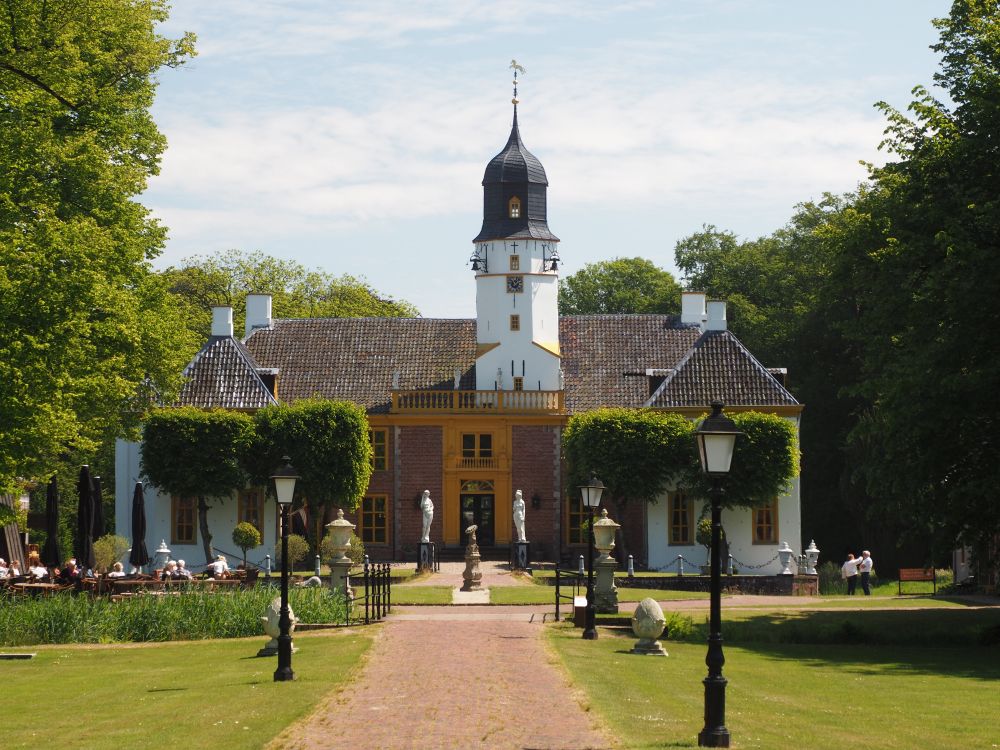
You see, one branch of his family occupied Fraeylemaborg for about a hundred years. Unfortunately for us, but fortunately for everyone else, the house is now a historic house museum and open to the public. While the Dutch word borg is often translated to mean “castle,” I think the British would call it a “stately home” rather than a castle.
Disclosure: This article contains affiliate links. If you click on one and make a purchase, I will receive a small commission. This will not affect your price.
The history of Fraeylemaborg
The original Fraeylemaborg was a simple thick-walled stone house, built in the 13th century. Its purpose at the time was more defensive than anything else. In the 16th century it was renovated and expanded and the moat was added. The two side wings were added in the 17th century.

This was the point when my husband’s family comes in, starting with Henric Piccardt. He was a well-regarded member of Louis XIV’s court in France. By all accounts he had a fine time there. He wrote and published poetry, played the harp, tutored nobles’ sons, and cavorted with various courtly consorts and then wrote poems about them. When war broke out between France, the Dutch Republic and Munster, he went back to the Netherlands. There, he was arrested for his suspicious connections to the French court.
To read about lots of other things to see in Groningen province, try this article.
Upon Piccardt’s release after just a few months, he turned his attention to politics and married Anna Elisabeth Rengers, whose father owned Fraeylemaborg. Piccardt bought it from him, with help from his friend the Dutch King Willem III, in the form of a loan. After doing some major renovations to the house, including adding a wing and laying out the plan of the gardens, Piccardt died in 1712. Since he had no children, the estate passed to his half-brother’s son, Johannes. My husband is directly descended from Johannes as well as from both of Henric’s full brothers, Alexander and Johan.
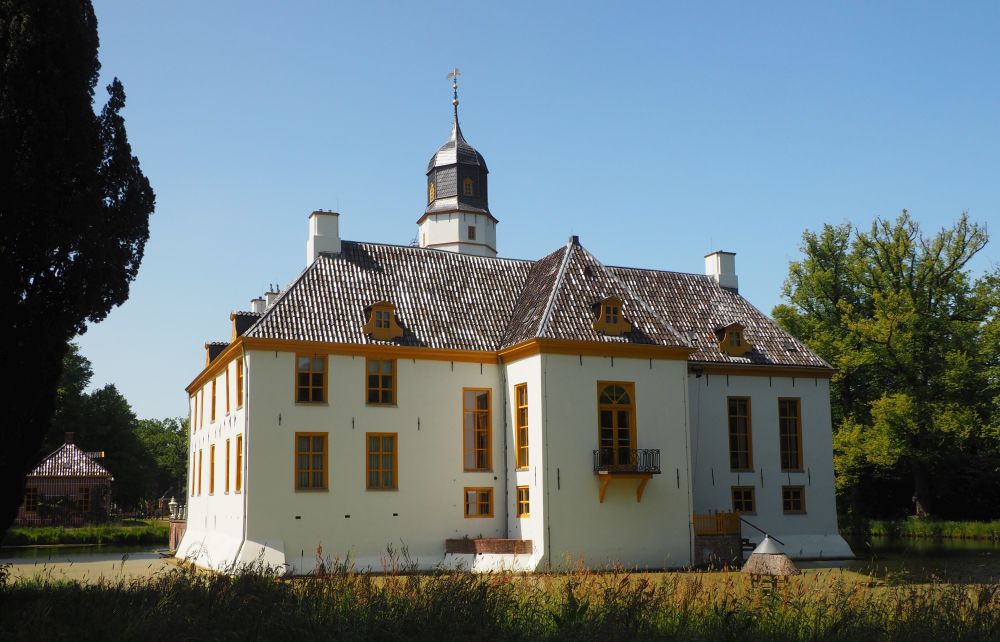
After Henric’s death, the family still owed money on the loan from the Dutch King Willem III. Eventually, they had to sell the estate. The new owner, Hendrik de Sandra Veltman, was responsible toward the end of the 18th century for the Fraeylemaborg’s next renovation and the gardens’ redesign in the English style, leaving the property more or less in the state we see today. He also built the two outbuildings in front called schathuizen, which means something like a stable or carriage house. This progression of improvements and additions over centuries explains its odd final form: symmetrical side wings, but with an out-of-proportion, off-center tower.
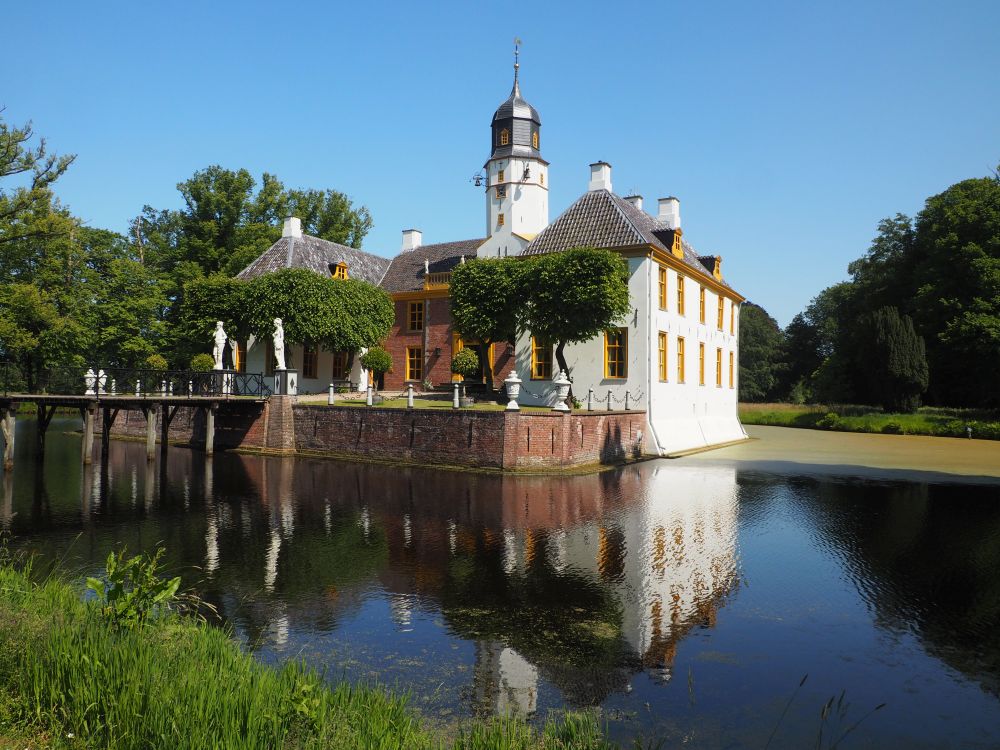
The last owners of Fraeylemaborg had a wonderful name: they were the Thomassen à Thuessink van der Hoop van Slochteren family, perhaps the longest name in the Netherlands! They lived in the house until 1972, when they sold it to the Gerrit van Houten Foundation.
Visiting Fraeylemaborg
The village of Slochteren is in the east of the province of Groningen in the northern Netherlands. You can take a bus from Groningen, but the easiest way to get there is by car. There’s plenty of parking on the property.
If you haven’t arranged your rental car yet, do it now!
Buy your ticket in the former coachhouse to the right as you face the main building. You can roam the gardens for free, but I’d recommend seeing the inside of the house too.
The main building as we see it today sits in the middle of a large wooded park. Inside, visitors can get an impression of life at Fraeylemaborg in the middle of the 20th century. Its inhabitants lived among a collection of furniture and objects ranging from centuries-old family heirlooms to recent purchases. While the rooms have been reconstructed, many of the objects were repurchased from the original collection that was sold in 1971. Many of the ceramic pieces and the paintings refer in one way or another to the House of Orange. This had to do with Henric Piccardt’s friendship with (and loan from) King Willem III.
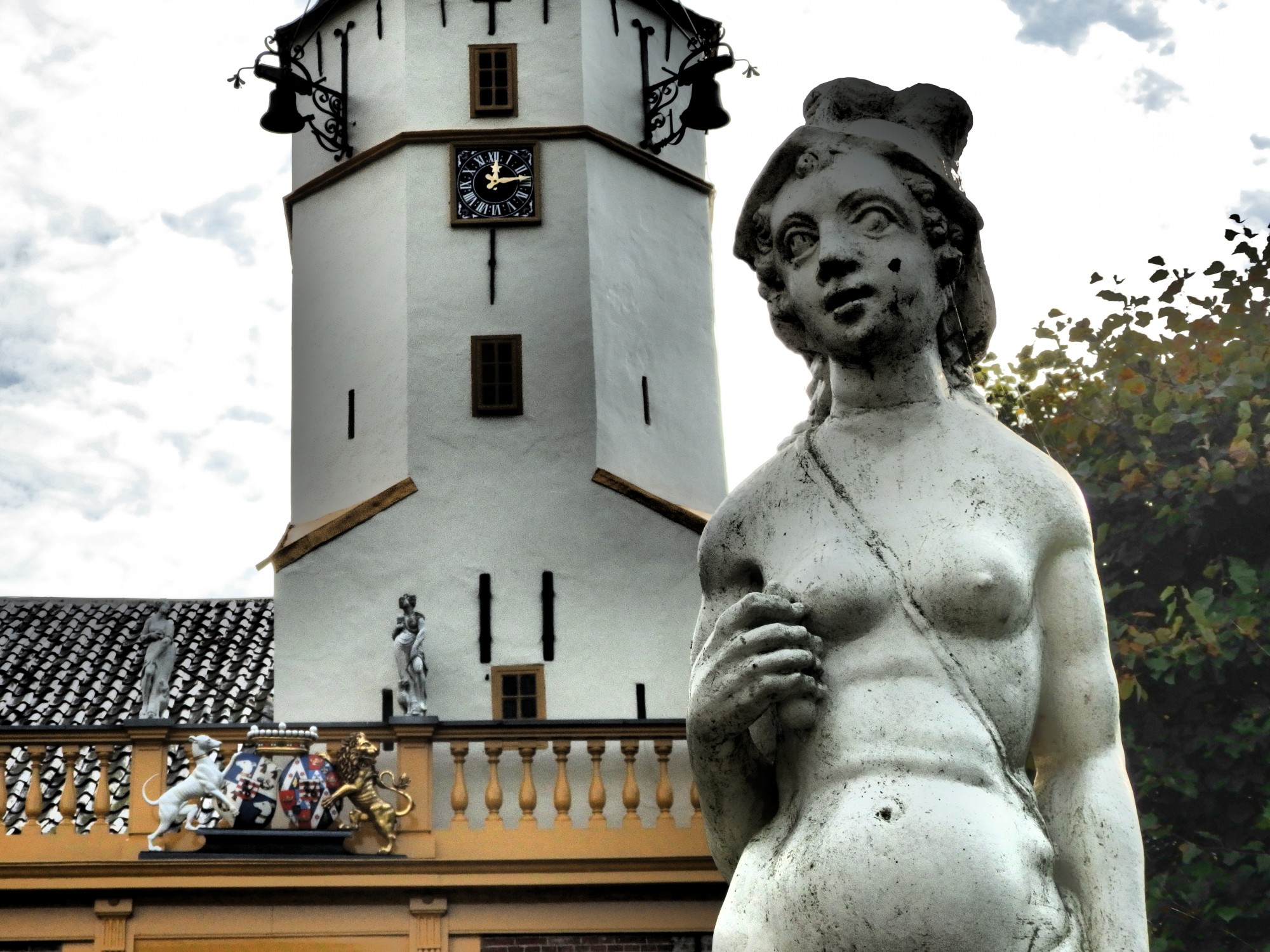
The dining room is set for dinner. The library and the Blue Guestroom have been recreated to match existing photographs from the last inhabitants. Much of it did not seem very fancy to me, but rather quite comfortable. It feels like a place you could actually live in.
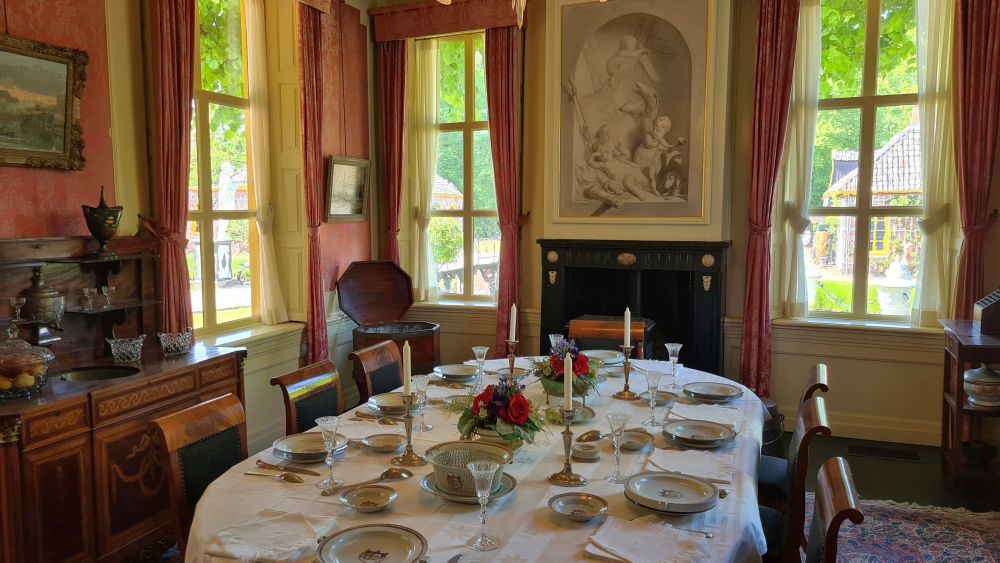
Conversely, the Great Hall on the ground floor is quite grand looking. It still hosts concerts and other events, while the Small Hall is a wedding hall these days.
I particularly liked seeing the low-ceilinged kitchen downstairs: its homeliness, the light across the clay tile floor, the ordinary objects used to prepare meals for the family upstairs. The kitchen and other servants’ work and living spaces around it are the oldest part of the house, dating to the Middle Ages.
Read about Bourtange Fortress too. It’s not far away by car.
In the attic – watch your head because the beams are low – take the time to watch the charming video in which one of the last residents, a member of the Thomassen à Thuessink van der Hoop van Slochteren family, tells about her memories of the house from her childhood.
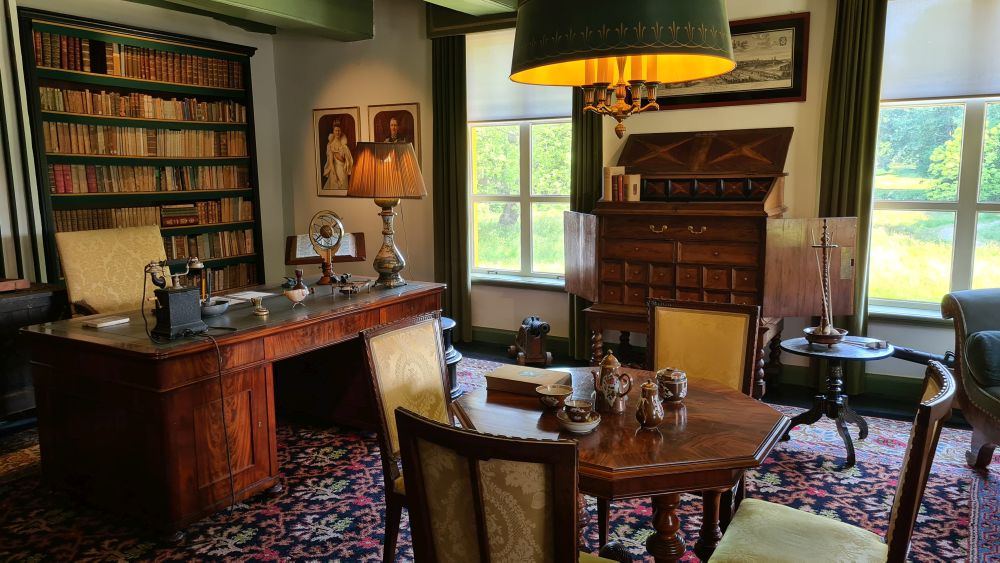
Fraeylemaborg’s garden
A visit to Fraeylemaborg would not be complete without a stroll around the grounds. The elongated 23 hectares of land – less land than the estate encompassed in Piccardt’s day – are in English landscape style. Seen from far away down a long vista of grass lined with woods, the house itself appears a more impressive building than it actually is. Paths wind through the woods, over bridges, around the various ponds.
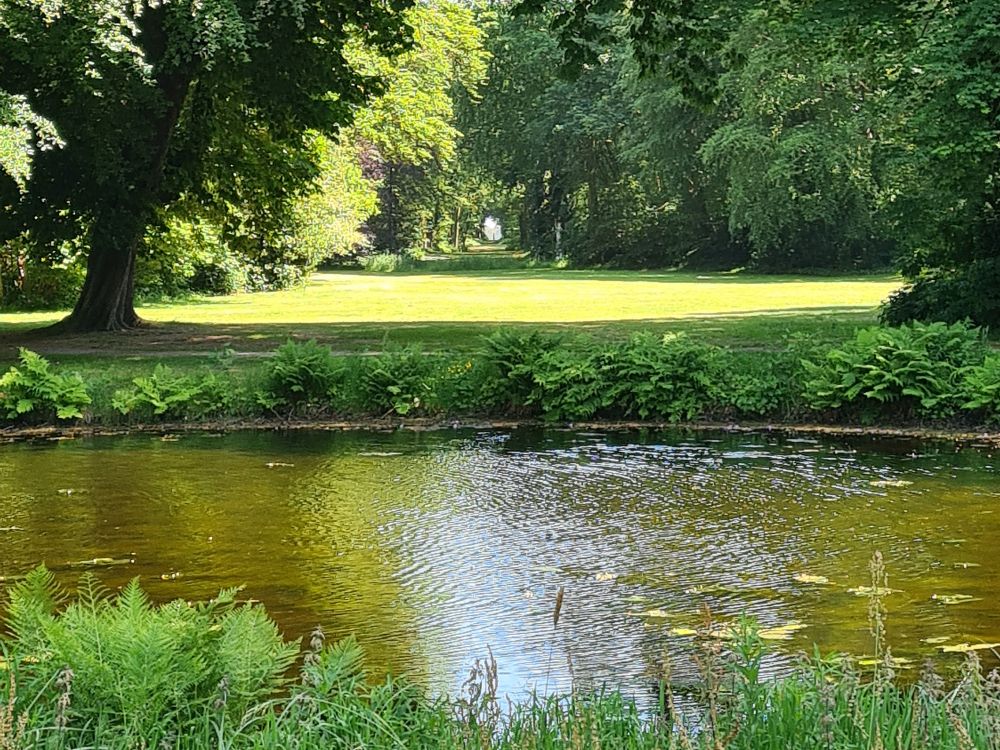
If you need a rest from all that strolling, the “Schathuis,” one of the carriage houses in front, is now a cafe-restaurant. If the weather is good, sit in the sun with a drink and enjoy the view of the house. Opposite the restaurant is another outbuilding: the old coach house, now an exhibition space.
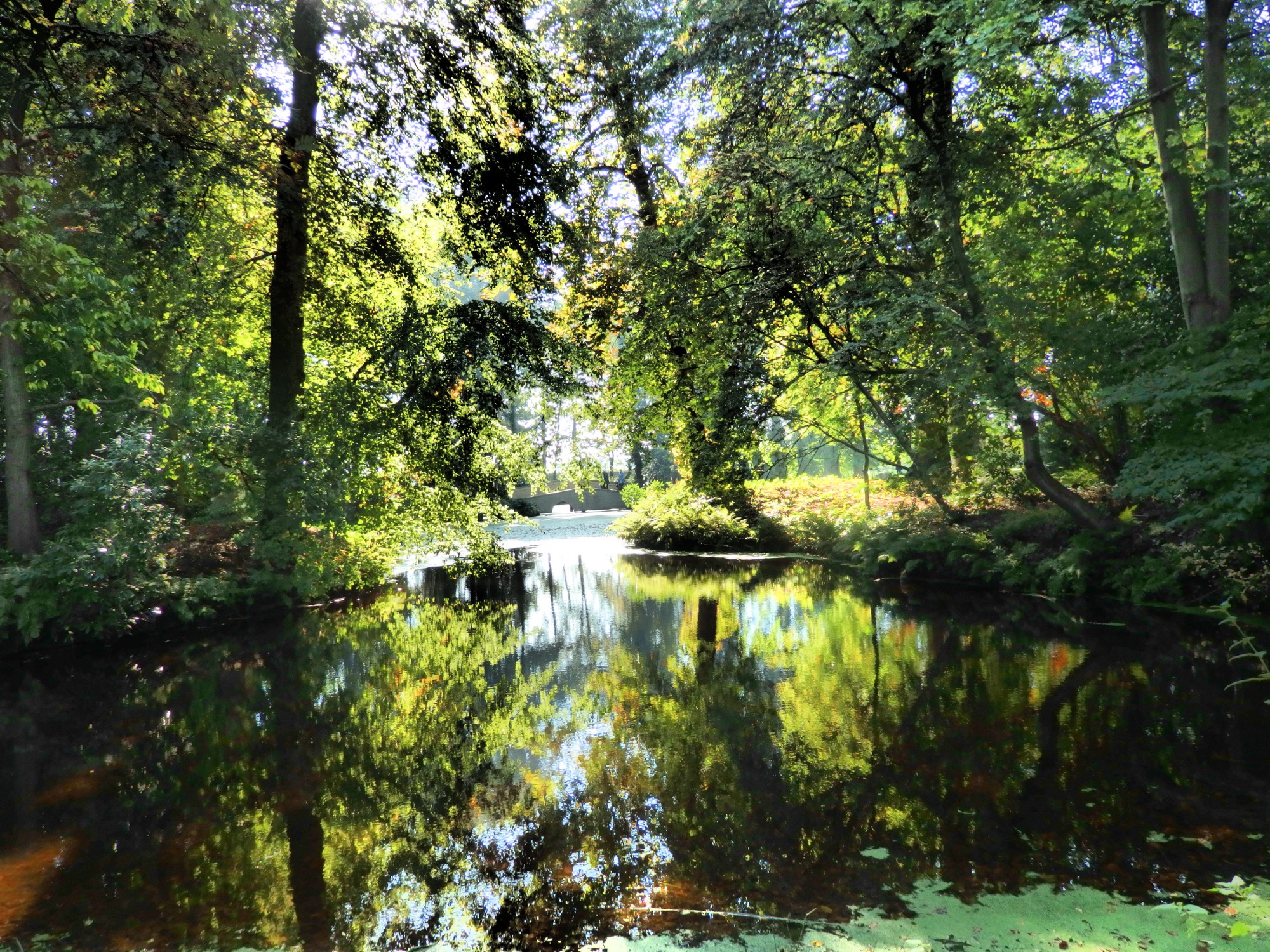
Often, for us, visits from out-of-town friends become our excuse for revisiting Fraeylemaborg. While my nickname for it as “the ancestral home” is just a fantasy, it remains in reality an off-the-beaten-track treasure.
Fraeylemaborg: Hoofdweg 30, Slochteren. Open Tuesday-Friday 10:00-17:00; Saturday-Sunday 11:00-17:00. On holidays, open 13:00-17:00. Admission to the building: Adults €8; children 6-12 €2.50. Garden admission is free. Website.
My travel recommendations
Planning travel
- Skyscanner is where I always start my flight searches.
- Booking.com is the company I use most for finding accommodations. If you prefer, Expedia offers more or less the same.
- Discover Cars offers an easy way to compare prices from all of the major car-rental companies in one place.
- Use Viator or GetYourGuide to find walking tours, day tours, airport pickups, city cards, tickets and whatever else you need at your destination.
- Bookmundi is great when you’re looking for a longer tour of a few days to a few weeks, private or with a group, pretty much anywhere in the world. Lots of different tour companies list their tours here, so you can comparison shop.
- GetTransfer is the place to book your airport-to-hotel transfers (and vice-versa). It’s so reassuring to have this all set up and paid for ahead of time, rather than having to make decisions after a long, tiring flight!
- Buy a GoCity Pass when you’re planning to do a lot of sightseeing on a city trip. It can save you a lot on admissions to museums and other attractions in big cities like New York and Amsterdam.
- Ferryhopper is a convenient way to book ferries ahead of time. They cover ferry bookings in 33 different countries at last count.
Other travel-related items
- It’s really awkward to have to rely on WIFI when you travel overseas. I’ve tried several e-sim cards, and GigSky’s e-sim was the one that was easiest to activate and use. You buy it through their app and activate it when you need it. Use the code RACHEL10 to get a 10% discount!
- Another option I just recently tried for the first time is a portable wifi modem by WifiCandy. It supports up to 8 devices and you just carry it along in your pocket or bag! If you’re traveling with a family or group, it might end up cheaper to use than an e-sim. Use the code RACHELSRUMINATIONS for a 10% discount.
- I’m a fan of SCOTTeVEST’s jackets and vests because when I wear one, I don’t have to carry a handbag. I feel like all my stuff is safer when I travel because it’s in inside pockets close to my body.
- I use ExpressVPN on my phone and laptop when I travel. It keeps me safe from hackers when I use public or hotel wifi.


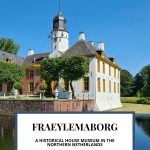
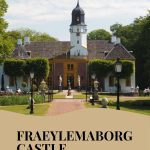

I loved our visit there with you. Felt right at home, thank you. My favorite room was the upstairs study, which I think is different from the library you show. I remember it be completely book lined and wood panelling.
Too many photos, too little space! These photos are from a more recent visit in the fall with another friend from the US!
Rachel,
Thank you and your husband for taking me there. It was a grand house, but it was even cooler that it has a connection to your husband’s family. Also, that piano in the drawing room was really cool!
You’re quite welcome! So when will you visit again?
Wow, what a beautiful place. I wish I knew how to say the name of it. A romantic place indeed!
Good point: it’s pronounced something like fry-lemma-borg, but that final g is pronounced like you’re clearing your throat gently.
You know, I would not mind referring at this place as my ancestral home and then showing pictures of it to all my friends. I know some people who would fall flat to the floor if I tell them that. Now being serious, this is a lovely face. Good your husband knows about his ancestors.
Genealogy is one of his hobbies. He’s traced some lines back to the 1200s!
We love finding out of the way places to visit. Your “ancestral home” looks delightful and you are lucky to have a reason to visit quite often. 🙂
It is delightful! And I am lucky!
How fun to have even a long ago and distant branch of the family living in a small castle like Fraeylemaborgke and equally interesting that your husband can trace his family back so many generations. The “ancestral home” is lovely and it seems that it would be very comfortable to live in, even now. I especially like how light all the rooms appear to be – not dark and gloomy as I usually picture very old homes!
Yes, the light was lovely, and it wasn’t even particularly sunny out. I could see myself living there, but only if I had WiFi, modern plumbing, and could afford to pay servants and gardeners to maintain it all! 🙂
What a beautiful piece of Dutch history and architecture! I love looking around stately homes (yes, I’m British and yes, that’s what we call them). It’s a glimpse into another world (but DO NOT be fooled by Downton Abbey!)
A lot of my view of what life would have been like in homes like this comes from shows like Downton Abbey and from Jane Austen novels! But it would all have been uncomfortable by today’s standards: smelly (think chamberpots and horse manure and poor hygiene) and cold (no central heating). The lower classes would have worked nearly constantly (no labor laws) and the upper classes, particularly women, would have led very boring lives.
Too bad that it’s not in your husband’s family anymore or maybe good, because you’d be bankrupt by the costs to maintain the castle. Anyway, a wonderful property with stunning gardens. Will have a look when we get to the Netherlands again. #boomertravelbloggers #greyworldnomads #Fraeylemaborg #slochteren
No way we could afford it, but it doesn’t hurt to dream!
I can’t even pronounce Fraeylemaborg but love the “tour” you took me through. I would call it the ancestral home as well, regardless that someone else bought it. The sad part about owning one of these homes is the cost. I can see why it would now be a museum. Owners could never afford the upkeep! These stately homes always seem to have beautiful grounds surrounding them and Fraeylemaborg is no exception.
There’s no way we’d be able to afford to live in a house like that!
How neat to have a familial tie to this historic property!
Yes, pretty cool, isn’t it!